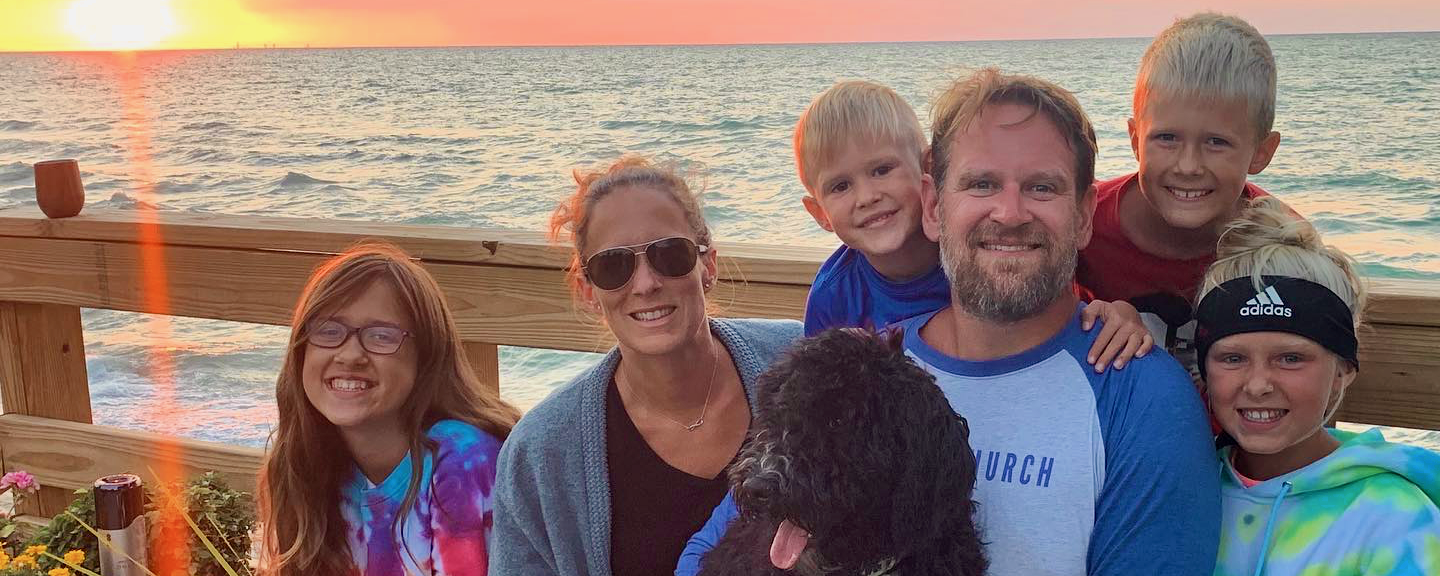Who Did You Vote For?
I have a special guest contributor for this entry, Drew Sherman. I didn’t know Drew previously, but am friends with his brother, Steve. Drew also didn’t know of me, or my interests in reducing political polarization and promoting civil discourse. Drew wrote the following editorial, and shared it with his brother. Steve thought I would be interested in reading it, so Drew sent it to me. I think it’s great, and hope that you will enjoy reading it, too. With that, here’s Drew:

“Dad, Who Did You Vote For?” This question has been asked in my house, has it been asked in yours?
To give a little bit of background, I am married and have four children, ages 12, 10, 8 and 6. We returned to Grinnell, where I grew up, and even purchased my childhood home. I have a liberal arts degree, and am by most accounts simply “average.” I am also white. I have to say all of this because in today’s day and age, everyone is judged by where they come from, their education, their sexual orientation, or simply the color of their skin. Never has this seemed more apparent than during this Presidential election. However, now there are new standards for what is acceptable. Your voice is only as good as the boxes that you check.
When it comes to politics, you are either Red or Blue; there is no such thing as Purple in our society. If you like your guns, you cannot vote Blue. If you are a person of color, you cannot vote Red, and so on. Where did this notion come from, that one party is stomping on a particular group of people, and the only possible savior is the other party?
I had a close college friend recently state, “You cannot be for gay rights and vote for Trump.” This got me thinking; is that true? Do we have to be 100% for or against a party? Are the days of challenging a party from within gone? Are we all to follow a strict party line, and accept everything that our Blue or Red leaders tell us is the truth? Are the extremes taking complete control of both? Or, can we still make meaningful change within our parties, in order to find what makes the most sense for more Americans?
Another close friend asked two days after the election, “Does anyone on this (Zoom) call know anybody that lives in a house divided?” Granted he lives in Chicago, and presumably everyone on our weekly call had voted for Biden. I immediately chimed in, and spoke about a few of my friends in Iowa that did vote differently within their own households. I spoke about how they did not necessarily vote for the person, as they openly spoke about their disdain for both candidates. However, they voted along party lines and what they believe they stand for. His reply was simply, “Well, I don’t think I could live with someone that voted for Trump.”
What the parties actually stand for could be argued at another time, but if you think about it at its core, it makes sense. Presidents come and go, but we still have a basic two-party system in this country. These two parties encompass nearly half of all “active” voters in every election. It is rare that we have all branches of government controlled by one party; typically at least one branch of the legislature is controlled by a different party than the President. This, in my opinion is a good thing, regardless of the party in charge. Checks and balances are exactly what the framers had in mind. Without balance we have problems.
This leads me to where we are now as a country, as a people, as a house divided. When did we become so aligned with Red or with Blue that there is no longer dialogue and compromise? Some would blame social media, some would like to blame Trump or the BLM movement. I would argue that the loudest voices from the fringes are the only ones being heard and that the center is in the middle quietly sobbing. Nobody in the center wants to speak up and ask questions only to be told to shut up by one or both sides. So, we sit quietly and avoid comments on social media due to the backlash that will likely ensue, even though our intent was pure. We are the silent majority.
My wife and I watched The Social Dilemma last night on Netflix. While it was not a surprise to learn about the algorithms that our social networks are utilizing to manipulate us daily, it was very eye opening that there are so many people who created those platforms who are now trying to expose them. One of the eye-opening side comments in the movie was when a father figure asks their family if they saw the extreme center riots going on in their city? Think about the ridiculousness of that concept for a moment; ”The Extreme Center.” When will this come to fruition? Who will lead the party? What will it take for us to get there? Is it the common-sense party? Is it the party that cares about both climate change and the 2nd amendment?
My ten year old daughter was asked to vote for President in a mock election at school, and when she stated that she did not know who she wanted to vote for, the teacher simply asked, “Well, who are your parents voting for?” My daughter responded, “They won’t tell me. They say I’m too young to pick sides.” She apparently picked Kanye. My point is that we are trying to teach our children about social justice, being kind, loving, and accepting, while also respecting the decisions of others. In time, she will form her own opinions about parties and candidates, and upon turning 18 she will be eligible to vote in her first Presidential Election.
My hope is that by not “forcing” her to grow up Blue or Red, she can make the most informed decision for herself at that time. I hope more people can teach their kids to be good humans and not to judge anyone based on where they are from, how much money they make, the color of their skin, or their political affiliation. We need to get back to the center and stop all the hate, from both sides. We need to truly listen to each other again.
Drew Sherman is a 5th generation Grinnellian. He and his wife moved back to Grinnell permanently in 2009, where they are raising their four children. Drew has worked in the building materials industry in various positions since 2000.
